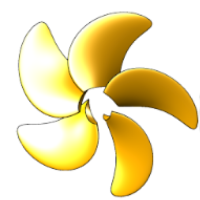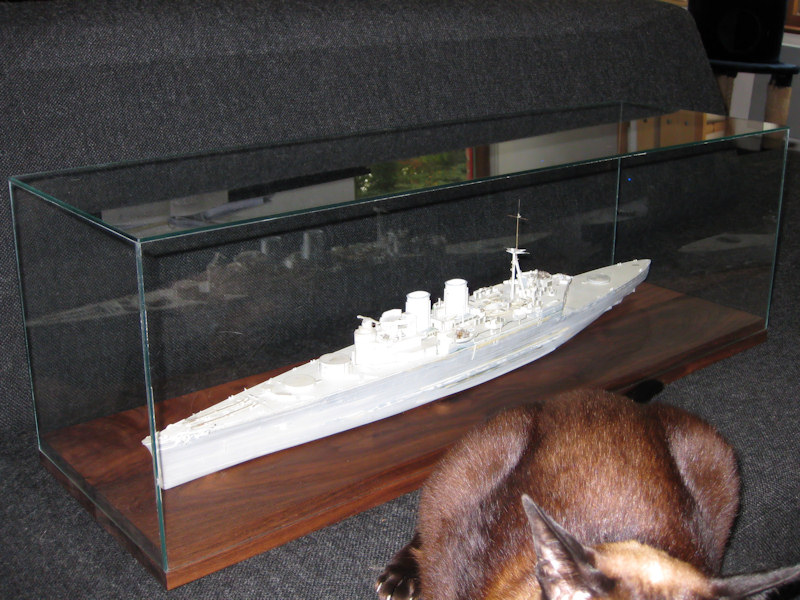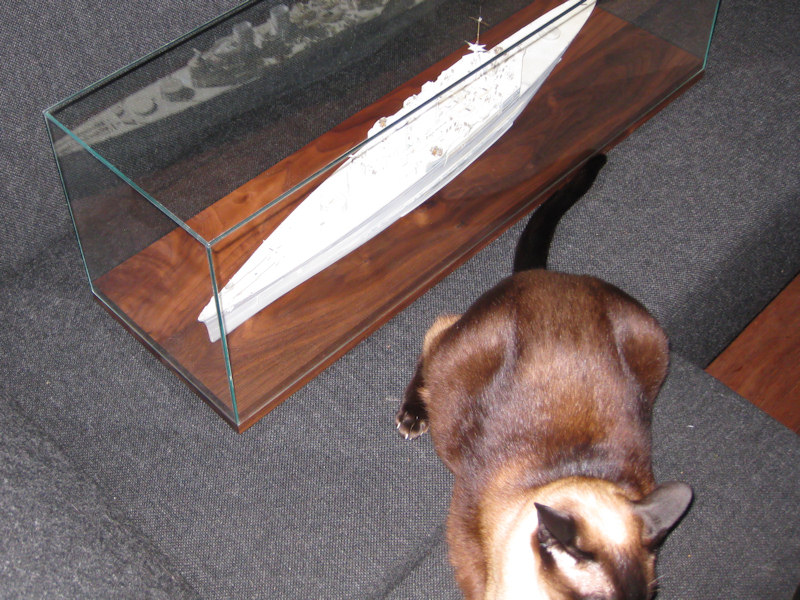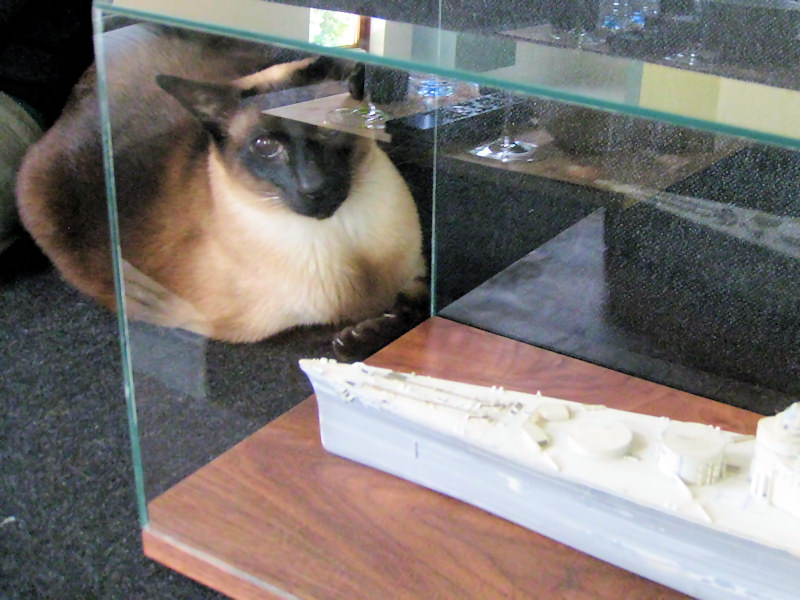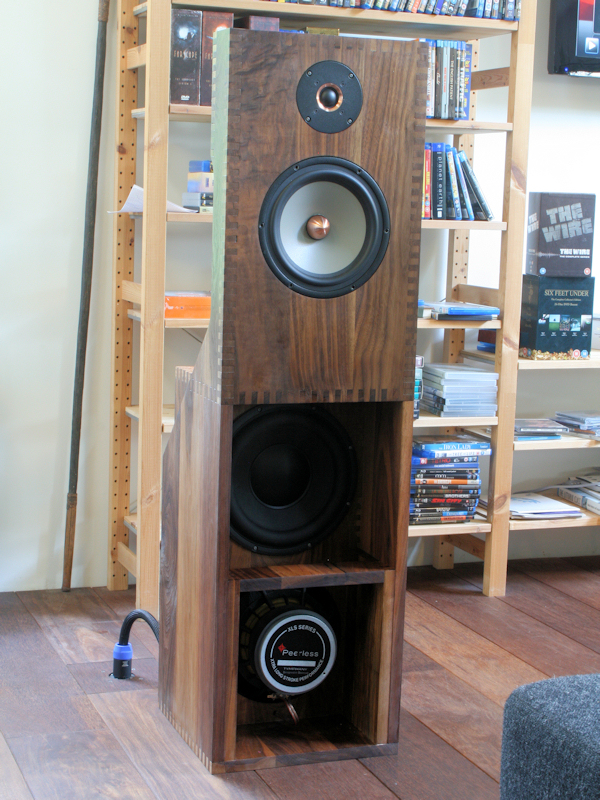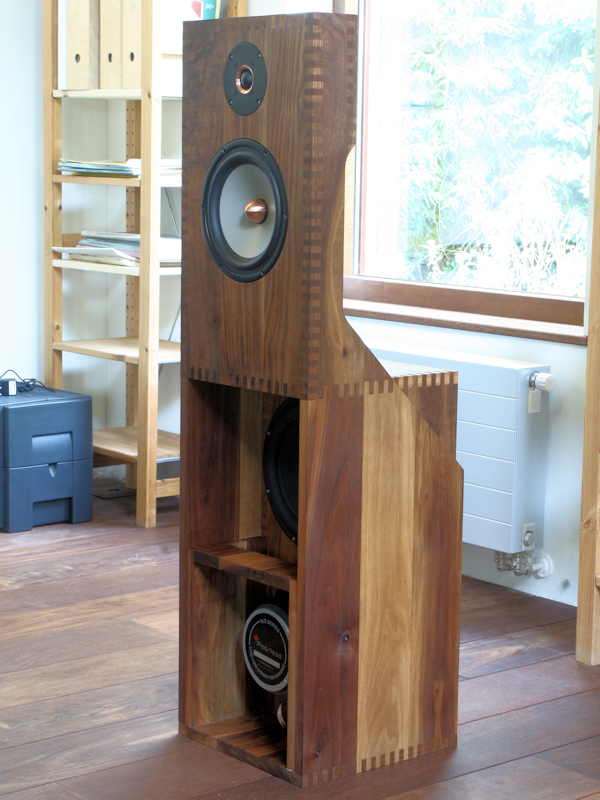Warning: Attempt to read property "post_type" on null in /var/www/ontheslipway.com/wp-includes/post.php on line 6532
Now, that speaker building project I was talking about earlier was a good exercise for building a presentation cabinet. Damage to models is rare on shows but I get incredibly nervous when people are shaking hands above my model; even a minor hit can mean irreparable damage. Our local IPMS SIG Warships leader builds his own glass cases and blackmailed me to come to a few shows in exchange for a glass cabinet built at cost. Today I made a wooden base for the model using some left-over planks from my bookcase. It should protect the model against shows, transportation, and dust.
The plank was milled to size and I cut a small ledge for the glass case. The glass is 3.0mm thick and has a bit of room to manoeuver (also in case the wood works). Although my cats aren’t an enemy of my hobby—they haven’t caused any damage to my model—today I just couldn’t get the tiny bastard out of the frame; he’d bounce back immediately after being thrown a great distance across the living room.
The model is bolted to the plank by three nuts and bolts. Recall that I started with the WEM resin hull that I fitted with fixing bolts before adding new decks. The glass case is 80 cm wide so that it fits in most book cases (I refuse to admit it is made to fit an Ikea Ivar bookcase) and is 25 cm wide and high. That’s a bit wider than strictly required, but this size will fit my next project too. A seascape will be added once I’ve thoroughly exercised making seascapes.
Yes, I assure you, cat, we are quite safe from your friends here.
